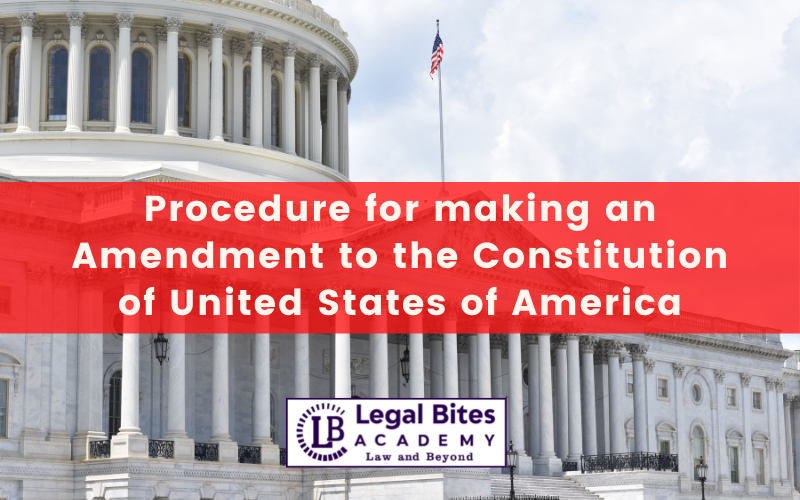House of Representatives and Senate: Election and Qualification
House of Representatives and Senate elections differ in who votes for the candidates. In this article, we will learn about the Election system and Requirements to be a member of Congress. All eligible voters within a state may vote for Senator. A Representative is elected by only those eligible voters residing in the congressional district that the candidate… Read More »
;
House of Representatives and Senate elections differ in who votes for the candidates. In this article, we will learn about the Election system and Requirements to be a member of Congress. All eligible voters within a state may vote for Senator. A Representative is elected by only those eligible voters residing in the congressional district that the candidate will represent. Election winners are decided by the plurality rule. That is the person who receives the highest number of...
House of Representatives and Senate elections differ in who votes for the candidates. In this article, we will learn about the Election system and Requirements to be a member of Congress.
All eligible voters within a state may vote for Senator. A Representative is elected by only those eligible voters residing in the congressional district that the candidate will represent. Election winners are decided by the plurality rule. That is the person who receives the highest number of votes wins.
Introduction | House of Representatives and Senate
It was the original constitutional scheme to vest the determination of qualifications for electors in congressional elections solely in the discretion of the States, save only for the express requirement that the States could prescribe no qualifications other than those provided for voters for the more numerous branch of the legislature.[1]
Further, beyond the limitation of discretion on the part of the States, Congress has assumed the power, with judicial acquiescence, to legislate itself to provide qualifications at least with regard to some elections.[2]
Thus, in the Voting Rights Act of 1965, Congress legislated changes of a limited nature in the literacy laws of some of the States, and Congress successfully lowered the minimum voting age in federal elections and prescribed residency qualifications for presidential elections, the Court striking down an attempt to lower the minimum voting age for all elections.
These developments greatly limited the discretion granted in Article I, Section 2, cl. 1, and are more fully dealt with subsequently in the treatment of Section 5 of the Fourteenth Amendment.
House of Representatives
Qualifications in the House:-
Article I, Section 2 of the Constitution sets three qualifications for representatives. Each representative must
- be at least twenty-five years old,
- have been a citizen of the United States for the past seven years, and
- be (at the time of the election) an inhabitant of the state they represent.
Members are not required to live in the district they represent, but they traditionally do. The age and citizenship qualifications for representatives are less than those for senators. The constitutional requirements of Article I, Section 2 for election to Congress are the maximum requirements that can be imposed on a candidate.
Therefore, Article I, Section 5, which permits each House to be the judge of the qualifications of its own members does not permit either House to establish additional qualifications. Likewise, a State cannot establish additional qualifications.
Election
When the first Congress met in 1789, there were 59 Representatives in the House of Representatives. As the number of states increased and as the population grew, the number of Representatives increased significantly.
A law passed in 1911 fixed the size of the House of Representatives at 435 members. Members of the House are up for re-election every two years. The number of persons representing each state depends upon its population as reported in the Nation’s decennial census counts. Each state is divided into congressional districts accordingly. There is a Representative for every congressional district and every state has at least one congressional district.
Most states have primary elections to decide which candidates will be on the November general election ballot. Some state parties hold conventions in conjunction with the primary. If a candidate is unopposed, there may not be a primary election. Those who represent a major political party are automatically placed on a state’s primary ballot. Minor party candidates are chosen by their party’s rules while independent candidates nominate themselves.
Independent candidates and those representing minor parties must meet various state requirements to be placed on the general election ballot. An example of this would be to submit a petition with signatures from a certain number of registered voters.[3]
Senate
Qualification
Article I, Section 3 of the Constitution sets three qualifications for Senate:
- they must be at least 30 years old,
- they must have been citizens of the United States for at least the past nine years, and
- they must be inhabitants of the states they seek to represent at the time of their election.
The age and citizenship qualifications for senators are more stringent than those for representatives. In Federalist No. 62, James Madison justified this arrangement by arguing that the “senatorial trust” called for a “greater extent of information and stability of character.”
Election
The U.S. Senate has 100 members, elected for six-year terms in dual-seat constituencies, two from each state. One-third are renewed every two years. The group of the Senate seats that is up for election during a given year is known as a class. The three classes are staggered so that only one of the three groups is renewed every two years. Until the Seventeenth Amendment to the Constitution in 1913, Senators were elected by state legislatures, not the electorate of states.[4]
Senate and House of Representative elections differ in who votes for the candidates. All eligible voters within a state may vote for Senator. A Representative is elected by only those eligible voters residing in the congressional district that the candidate will represent. Election winners are decided by the plurality rule. That is the person who receives the highest number of votes wins. This may not necessarily be a majority of the votes.[5]
Case Law
Hatfield v. Holt[6]
In the case of Senator-elect Rush D. Holt, in 1935, the candidate receiving the most votes was not yet eligible to serve in the Senate at the time he was on the ballot for the general election, nor at the time of the beginning of the new congressional session, because he was only 29 years of age.
The Senate found that since the issue of “qualifications” arises when the Member-elect presents his credentials to the Senate to take the oath of office and be seated, the Senate could, and did, allow the candidate/Member-elect to delay presenting his credentials until the time he was 30 years old, and thus qualified.
Powell v. McCormack[7]
It is clear from the language and the debates on the adoption of this eligibility requirement that the citizenship requirement includes both native or “natural born” citizens (those who have the status of U.S. citizens at birth or by birth), as well as “naturalized” citizens (those who are born “aliens” and must go through the process of naturalization to be citizens of the U.S.).
It was conclusively established that the qualifications listed in clause 2 are exclusive9 and that Congress could not add to them by excluding Members-elect not meeting the additional qualifications
It is interesting to note that although Congress may not by legislation change the standing qualifications for office fixed in the Constitution Congress is expressly authorized in the Constitution to “establish a uniform Rule of Naturalization”.
U.S. Term Limits, Inc. v. Thornton.[8]
Arkansas, along with twenty-two other states, all but two by citizen initiatives, had limited the number of terms that Members of Congress may serve. In striking down the Arkansas term limits, the Court determined that the Constitution’s qualifications clauses establish exclusive qualifications for Members that may not be added to either by Congress or the states.
[1] J. Story, Commentaries on The Constitution Of The United States (Boston: 1833), 576–585.
[2] Katzenbach v. Morgan, 384 U.S. 641 (1966)
[3] A. Hinds’ Precedents of The House of Representatives (Washington: 1907)
[4] L. Schmeckebier, Congressional Apportionment (Washington: 1941).
[5] Election of Representatives, Available Here
[6] Case No. 119
[7] 395 U.S. 486, 522 (1969)
[8] 514 US 779 (1995)





